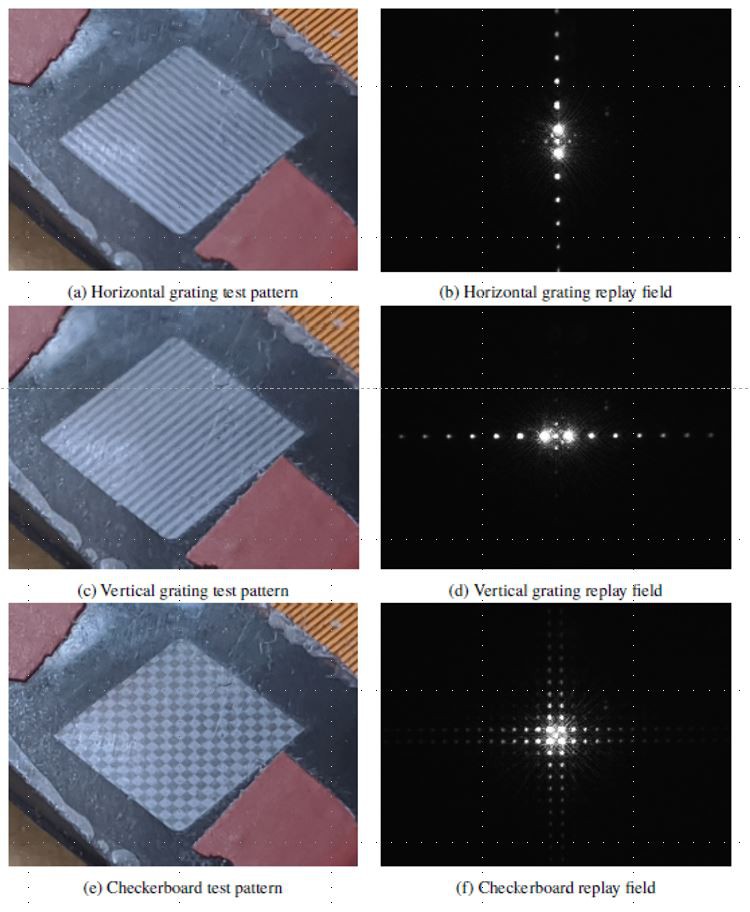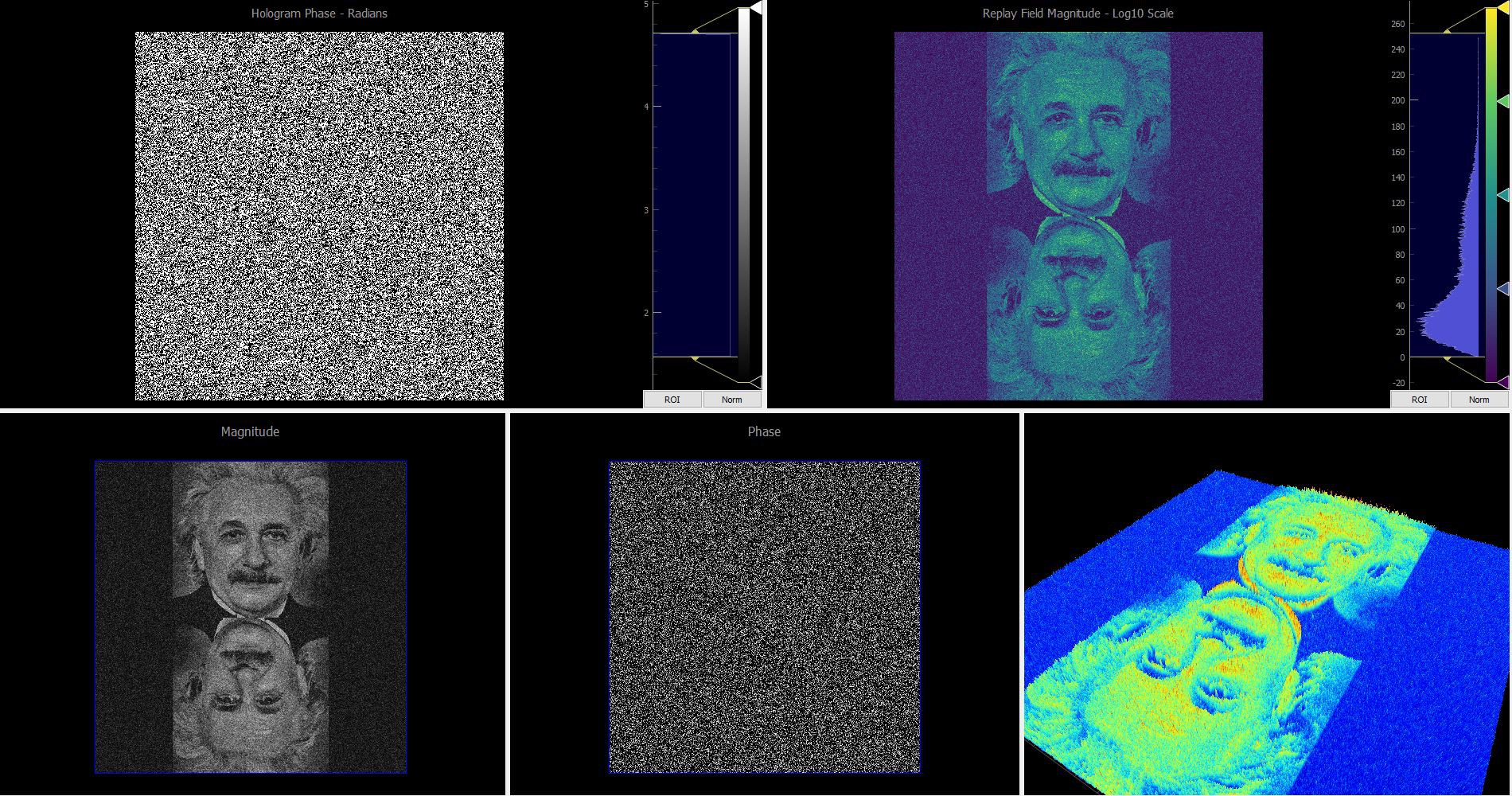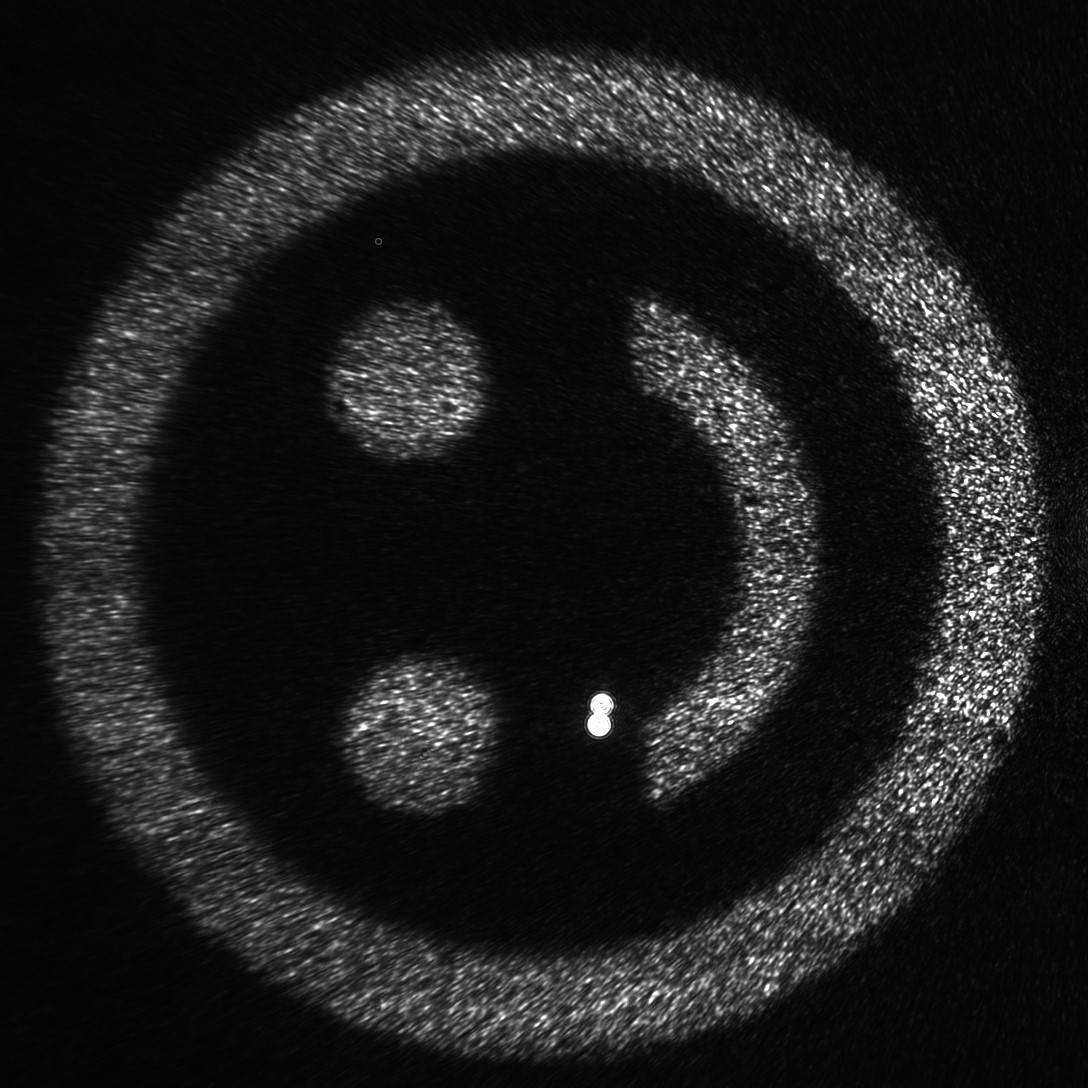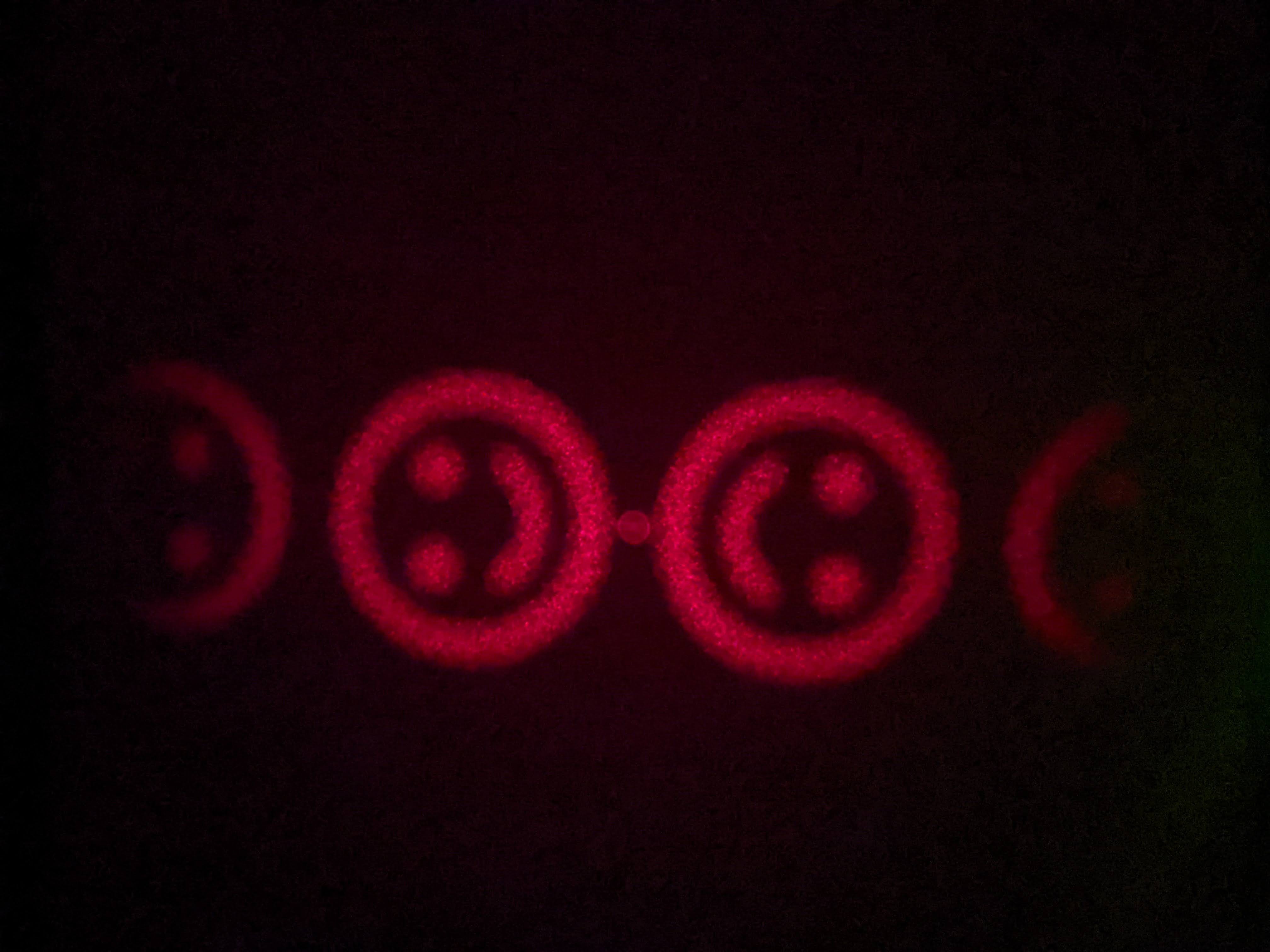Computer-Generated Hologaphy (CGH) is the process of generating holograms using purely simulated data. A typical configuration here is to place the Hologram at the focal length of a lens (Fourier plane), illuminating the hologram with a uniform wavefront (in the form of a collimated laser gaussian-spot) will then result in the inverse-fourier transform of the holgram being displayed at the output plane. This process is the basis of Fourier Optics (https://en.wikipedia.org/wiki/Fourier_optics). Sample gratings for this can be seen here:

In order to generate holgraphic wavefronts for this system, it was necessary to apply an appropriate algorithm. Here we applied Gerchberg-Saxton, a classical phase-retreival algorithm (https://en.wikipedia.org/wiki/Gerchberg%E2%80%93Saxton_algorithm). Outputs from simulation can be seen below where a 2-D image of Albert Einstein is being projected using a binary-phase hologram (our SLM is a binary-phase device so this represents what it achievable). The magnitude and the phase of the wavefront are also visualised in the replay field:

In addition to this, the 4-F system previously showen has also been used to generate images. Here is a smiley-face image read directly off the camera in said system (Note that it is a monochromatic camera as colour cameras using a Bayer-filter are less sensitive to laser illumination. This image is showing what a human eye placed at this position in space would see:

In addition, it is possible to generate your Hologram purely in the far-field without a lens if the replay field is suitably far from the hologram. This is because the wavefronts have suitably 'flattened' by this point that they effectively are no longer curved. This configuration is desirable for our display as the light propagation in this case is less complicated as the image is not affected by the phase-curvature introduced by the Fourier-Lens. The below 'lensless' hologram image was taken at a distance of 58cm from the SLM. Note that the image has been projected onto a diffuse surface (in contrast with the images taken with a monochromatic camera above).

 Andrew Kadis
Andrew Kadis
Discussions
Become a Hackaday.io Member
Create an account to leave a comment. Already have an account? Log In.